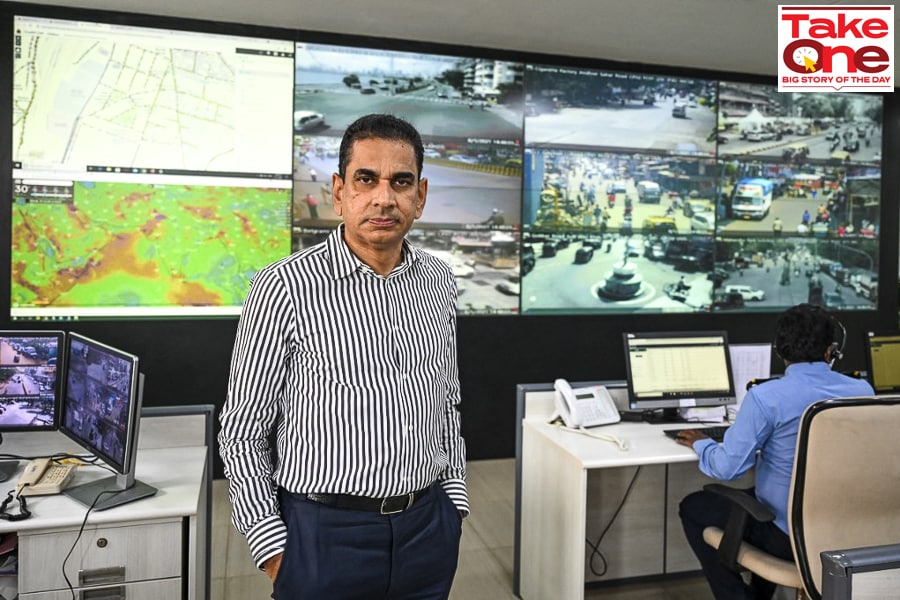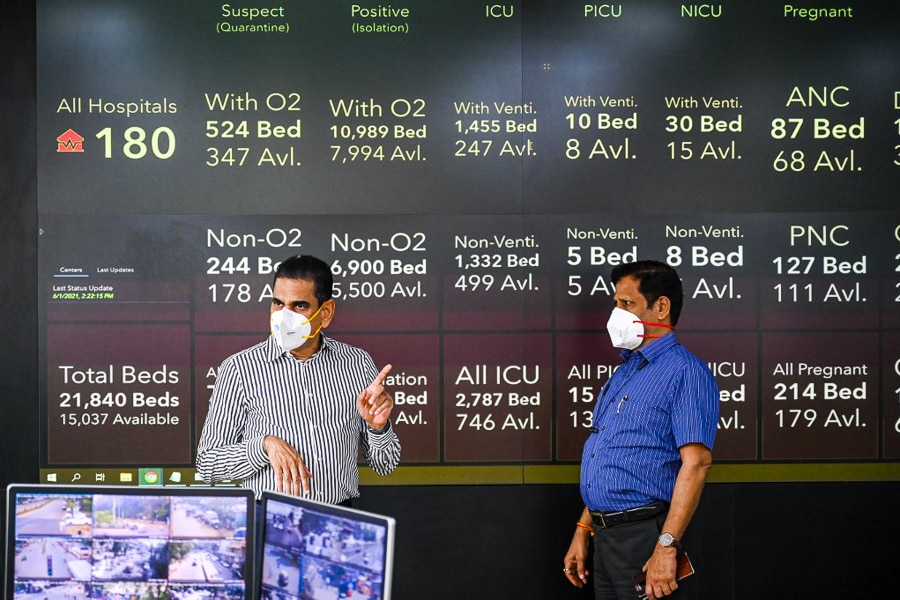
Masks can ensure there is no Covid-19 third wave: Iqbal Singh Chahal
The BMC Commissioner gives a peek into the city municipal body's exemplary management of the second wave and how they are prepping should there be another surge of cases
 Iqbal Singh Chahal, BMC commissioner; Image: Punit PARANJPE/AFP
Iqbal Singh Chahal, BMC commissioner; Image: Punit PARANJPE/AFP
Despite the initial chaos, the ‘Mumbai model’ of Covid-19 management worked well in the face of the surging second wave and earned praise from the Supreme Court as well. Planning, delegation and launching the right initiatives, like 24x7 war rooms equipped with doctors and trained staff, worked well in the favour of Brihanmumbai Municipal Corporation (BMC). But the BMC isn’t looking to be complacent, instead it has already started preparing for the third wave by setting up more jumbo centres, and training paediatricians, since children are expected to be more vulnerable to the third wave. In a freewheeling conversation with Forbes India, BMC Commissioner Iqbal Singh Chahal talks about learnings from previous waves, opening up of local trains, vaccination plans for slum-dwellers and tackling the next wave with monsoon setting in. Edited excerpts:
Q. How is the BMC planning to scale up infrastructure as experts suggest the third wave will mostly impact children?
The doctors in our task force advised me that a third wave could hit us by July-end or early-August and we need to be prepared for that. Chief Minister Uddhav Thackeray had called for a meeting in early-May where it was decided that Mumbai will construct four new jumbo centres, the primary reason being that last time, although we confronted the virus very well, we've had a lot of stress on ICUs.
We started constructing these jumbos from May 15. The tenders were put in place and workers were hired only last week. We’re building these along with Mumbai Metropolitan Region Development Authority (MMRDA). The plan is to have a 2,000-bed jumbo in Malad with 70 percent oxygen beds, and with learnings from the problems with oxygen supply last month, we’re going to have in-built oxygen generation plants in each of them so that we don't need to import oxygen. It will also have 200 ICU beds and 400 cubicles. These cubicles are designed keeping children in mind; in case they’re admitted their mothers can be with them in that cubicle. Other jumbos are being set up at Worli racecourse, Kanjurmarg and Sion. These 6,500 bed facilities [combined] will have 1,000 cubicles, 800 ICUs [200 each] and oxygen beds.
BMC is responsible for the Worli Racecourse jumbo and we have opened it last week. Unlike other jumbos, we didn’t need any approvals or permissions to build this because HDFC Bank’s Deepak Parekh funded it under the bank’s CSR project and provided Rs 45 crore for it.
About three weeks ago, our CM called a virtual meeting of 660 paediatric doctors of Maharashtra. The senior doctors from the task force addressed this meeting to sensitise them and make them aware of the threats of the paediatric wave. These doctors were further requested to spread the word to the family doctors of kids all over the state. We also created a paediatric task force to brief the family physicians with the do's and don'ts. This task force is also preparing a patient treatment protocol on what needs to be done if the child is under home quarantine or in the hospital.









